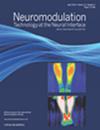Auricular Allodynia is Associated With Worse Outcomes in Children With Functional Abdominal Pain Disorders Using Neurostimulation
IF 3.2
3区 医学
Q2 CLINICAL NEUROLOGY
引用次数: 0
Abstract
Background and Aims
Percutaneous electrical nerve field stimulation (PENFS) is a minimally invasive, nonpharmacologic approach to treat children with functional abdominal pain disorders (FAPD). Allodynia refers to pain from a stimulus that does not usually provoke pain. We aimed to characterize auricular allodynia during PENFS and associate it with outcomes.
Materials and Methods
We conducted a retrospective cohort study reviewing charts of patients who underwent PENFS for an FAPD. We included demographic data, medical history, and validated questionnaire responses. Allodynia was noted through physician notes of localized ear pain, soreness, or tenderness. Baseline clinical scores and PENFS outcomes were compared in patients with and without allodynia.
Results
Of 219 patients with FAPD (mean age 16.2 ± 2.7 years), 79% were female, and 87% were Caucasian; 28% of patients experienced allodynia with no significant demographic differences. The most common gastrointestinal symptoms were abdominal pain (100%) and nausea (70%), and the most common FAPD diagnoses included irritable bowel syndrome (58%) and functional dyspepsia (54%). Of the 93 total visits with allodynia, 44% of the visits had patients report allodynia once and 34% twice. Common interventions included placing <four of the usual leads (19%) and early device removal (10%). Patients with allodynia had significantly greater Abdominal Pain Index, pain catastrophizing, Functional Disability Inventory, and insomnia scores (p < 0.05) at treatment completion than did those without allodynia.
Conclusion
Allodynia in patients with FAPD who underwent PENFS had worse clinical outcomes. Excitation thresholds of rapidly conducting Aβ fibers in the ear are lower than those of nociceptive slowly conducting Aδ and C fibers. Patients with allodynia may require adjustment of nerve fiber stimulation to improve outcomes.
应用神经刺激治疗功能性腹痛患儿耳廓异常性痛与较差预后相关
背景和目的:经皮神经电场刺激(PENFS)是一种微创、非药物治疗儿童功能性腹痛障碍(FAPD)的方法。异位性疼痛是指通常不会引起疼痛的刺激引起的疼痛。我们的目的是描述PENFS期间耳廓异常性痛的特征,并将其与预后联系起来。材料和方法:我们进行了一项回顾性队列研究,回顾了因FAPD接受PENFS的患者的图表。我们纳入了人口统计数据、病史和有效的问卷调查结果。异位性痛觉是通过医生记录的局部耳痛、疼痛或压痛来记录的。基线临床评分和PENFS结果在有和没有异常性疼痛的患者中进行比较。结果:219例FAPD患者(平均年龄16.2±2.7岁)中,79%为女性,87%为白种人;28%的患者经历过异常性疼痛,没有显著的人口统计学差异。最常见的胃肠道症状是腹痛(100%)和恶心(70%),最常见的FAPD诊断包括肠易激综合征(58%)和功能性消化不良(54%)。在93例因异常性疼痛就诊的患者中,44%的患者报告异常性疼痛一次,34%报告两次。结论:接受PENFS的FAPD患者异常性疼痛的临床结果更差。耳内快速传导的Aβ纤维的兴奋阈值低于痛觉性慢传导的Aδ和C纤维。异常性痛症患者可能需要调整神经纤维刺激来改善预后。
本文章由计算机程序翻译,如有差异,请以英文原文为准。
求助全文
约1分钟内获得全文
求助全文
来源期刊

Neuromodulation
医学-临床神经学
CiteScore
6.40
自引率
3.60%
发文量
978
审稿时长
54 days
期刊介绍:
Neuromodulation: Technology at the Neural Interface is the preeminent journal in the area of neuromodulation, providing our readership with the state of the art clinical, translational, and basic science research in the field. For clinicians, engineers, scientists and members of the biotechnology industry alike, Neuromodulation provides timely and rigorously peer-reviewed articles on the technology, science, and clinical application of devices that interface with the nervous system to treat disease and improve function.
 求助内容:
求助内容: 应助结果提醒方式:
应助结果提醒方式:


